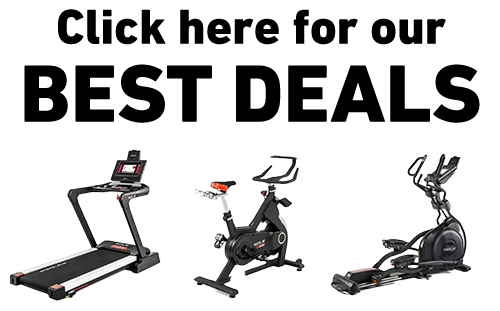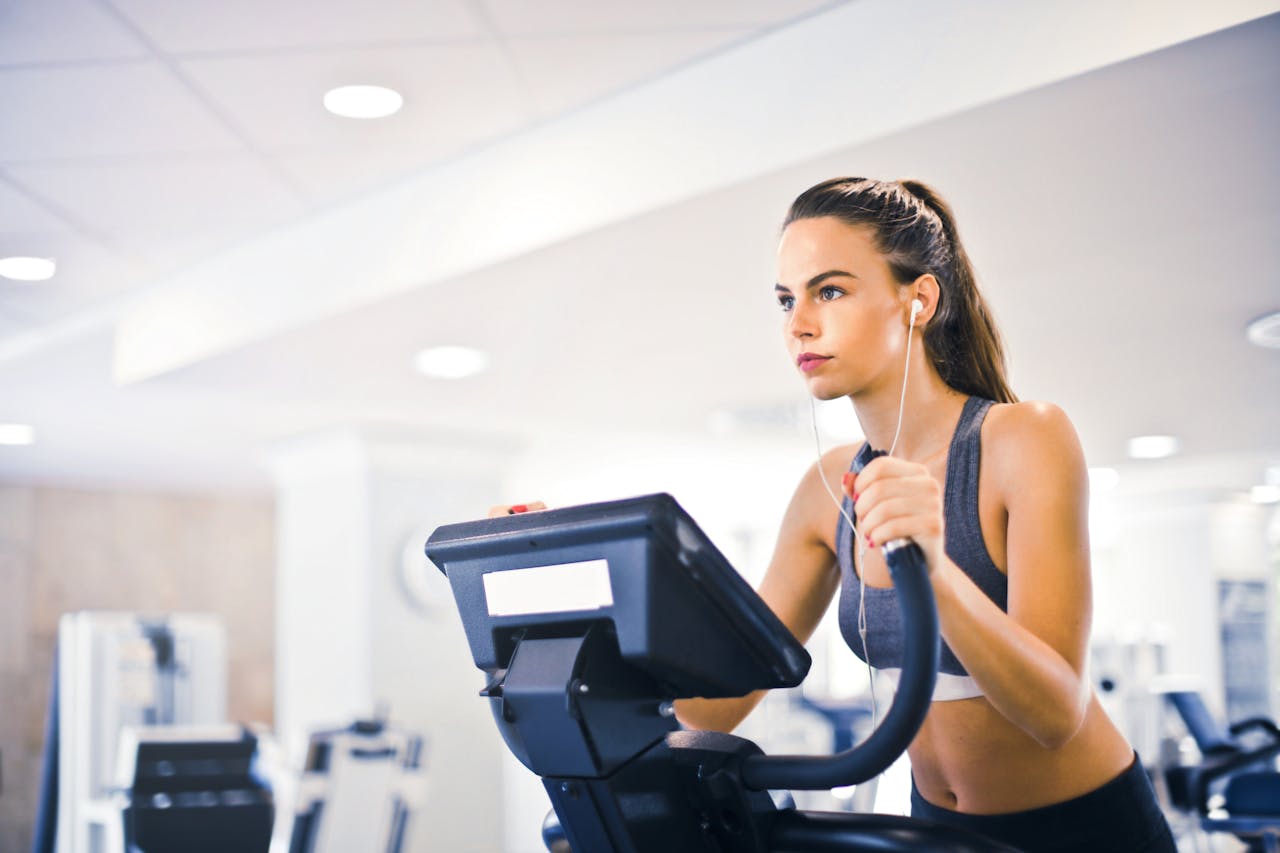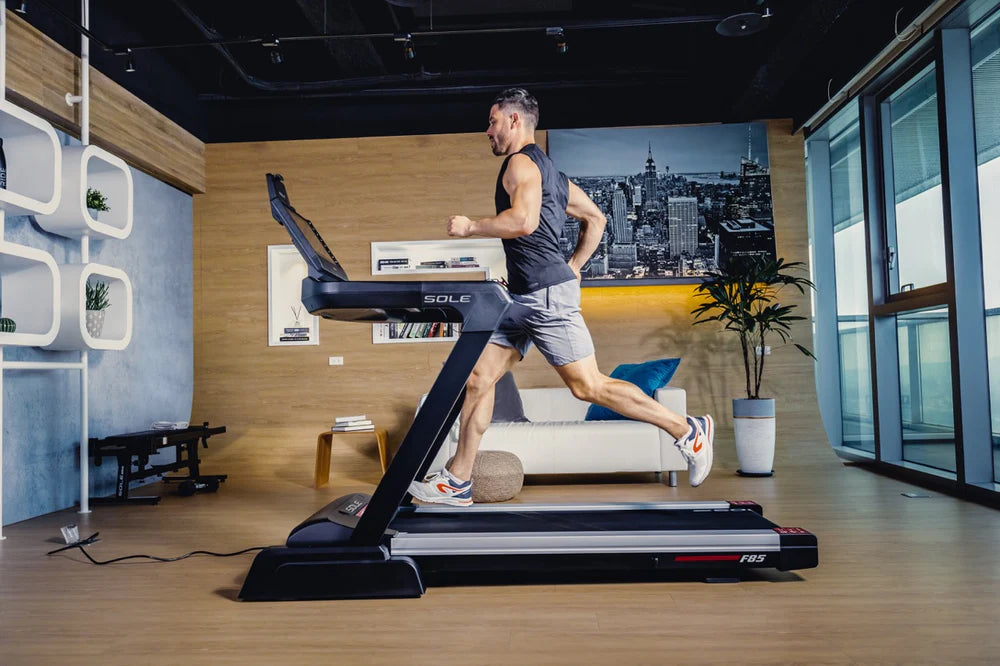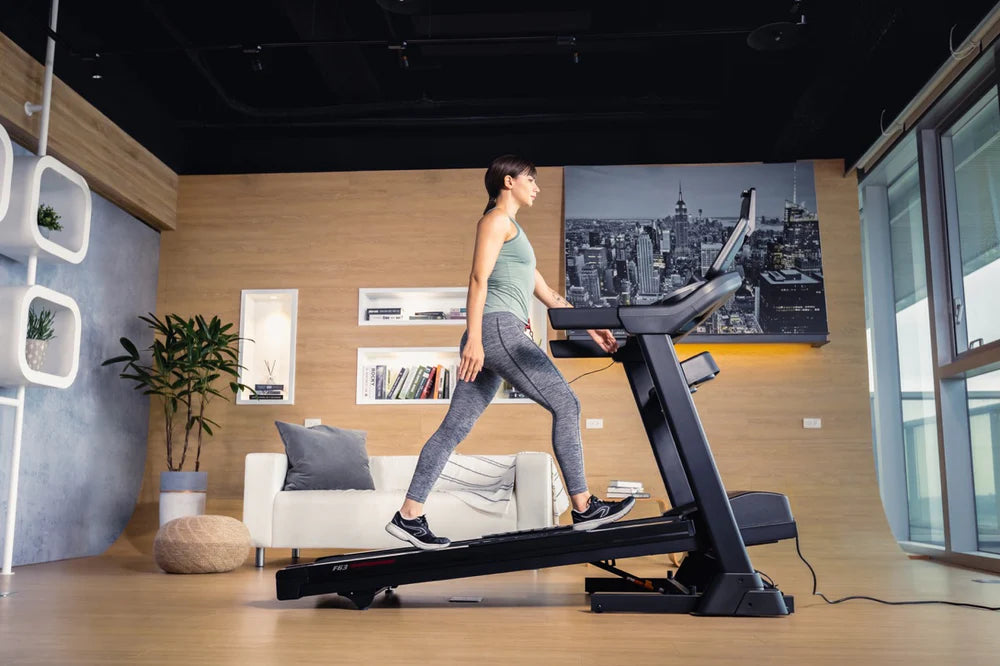Key Takeaways
- Exercise bikes are designed for low-impact workouts, ideal for individuals with bad hips.
- Recumbent bikes are particularly beneficial for those with hip pain due to their supportive seating.
- Treadmills might be more strenuous on the hips due to the impact of walking or running on the deck.
- But, treadmills can still be adjusted (e.g., incline and speed) to reduce the impact on the hips.
- Choosing between a treadmill and a bike depends on personal comfort, the severity of hip issues, and fitness goals.
|
At SOLE, we offer top-tier fitness equipment designed for low-impact exercises, ideal for individuals with bad hips. Our treadmills and bikes provide exceptional quality, performance, and comfort for effective yet gentle workouts. Whether for home or gym use, SOLE's solutions ensure those with hip issues can exercise confidently and safely. Featured Products
|
Treadmill vs. Bike for Bad Hips
For individuals with bad hips, exercise bikes are generally a better option compared to treadmills. Treadmills, while effective for cardiovascular exercise, can put significant stress on the hip joints due to the high-impact nature of walking or running, which can exacerbate existing hip problems and potentially lead to further injury.
Recumbent bikes, in particular, are an excellent choice for those with bad hips. These bikes have a chair-like seat that provides additional support and stability for the back and hips. The reclined position also allows for a more natural hip alignment, reducing the strain on the joint.
Many recumbent bikes also allow users to adjust the seat height and pedal positioning, which is especially important for individuals with limited mobility or severe hip issues.
Top Features of Treadmill for Bad Hips
- Cushioned Deck: SOLE treadmills such as the F85 and F89 feature the Cushioned Flex Whisper Deck, which absorbs impact to reduce the shock on your legs and hips by up to 40% compared to asphalt. The slat belt design with interlocking slats on the ST90 provides a realistic running experience, better traction, and stability, and a low-impact workout, which is also ideal for those with bad hips.
- Robust Frame: A sturdy frame, like the industry-leading aluminum frame on the F80, offers a stable running surface. This stability reduces impact and prevents unnecessary movement, minimizing hip pain or discomfort.
- Spacious Running Belt: SOLE treadmills have wide belts, typically 20 inches or more, providing increased stability and reducing the risk of wobbling. This wider platform helps individuals with hip pain maintain a controlled walking or running motion and reduces the chance of accidental falls.
- Handrails: Most SOLE treadmills include handrails, which are especially useful when starting, stopping, or regaining balance. They also assist with low-impact exercises like side steps or walking backward to improve hip mobility and range of motion.
- Incline and Speed Adjustment: SOLE treadmills allow you to customize incline and speed, starting slow and increasing intensity as your hips strengthen. Begin with a flat incline and a slow walking speed of 1.5 to 2.0 miles per hour to minimize stress on the hip joint. As your fitness improves, gradually increase the incline for a more challenging workout.
- Treadmill Console Technology: All SOLE equipment come with free access to SOLE+ fitness app. This app provides access to hundreds of workout videos and routines ranging from 10 to 60 minutes, offering gentle exercises suitable for all fitness levels and hip conditions.

Top Features of Bike for Bad Hips
- Supportive Seating Design: Bikes (especially recumbent bikes like the LCR and R92) offer a supportive seat that reduces pressure on the hip joint, unlike traditional bicycles. The adjustable seat allows you to find the optimal position for your hip anatomy, ensuring proper hip flexion and extension during movement, which reduces strain on the hip joint and surrounding muscles.
- Smooth Pedaling Mechanism: Bikes feature a smooth, gliding pedal motion that mimics running or walking strides without the high-impact forces. This continuous motion minimizes stress on the hip joint, reducing pain and discomfort during exercise.
- Varied Resistance Settings: Bikes usually come with adjustable resistance levels, typically from level 1 (minimal resistance) to level 20 (maximum resistance) so that you can customize workout intensity to your needs and fitness level. You can start with low-resistance exercises first and gradually increase intensity as your hips strengthen. Low-impact resistance training strengthens the muscles around the hip joint, improving stability and reducing pain. Our SB900 and SB1200 are indoor bikes that have 100-level magnetic resistance.

An Overview of SOLE Treadmills & Bikes for Bad Hips
|
Model |
Type |
Key Features |
Benefits for Bad Hips |
|
Treadmill |
Cushioned deck, 20” x 60” running deck, 3.0 HP motor |
Cushioning reduces impact on hips |
|
|
Treadmill |
Cushioned deck, 22” x 60” running deck, 4.0 HP motor |
Cushioning reduces impact on hips and the larger running deck is better for longer strides |
|
|
Indoor Bike |
Road bike feel, adjustable seat and handlebars, heavy-duty frame |
Simulates outdoor cycling, customizable for comfort, durable |
|
|
Recumbent Bike |
Supportive backrest, easy step-through design, ergonomic pedals |
Alleviates pressure on hips, easy to get on and off, reduces fatigue |
Choosing the Right SOLE Treadmill & Bike for Your Bad Hips
Generally, you might burn more calories on a treadmill compared to an exercise bike, simply because you're engaging more muscles during a walk or run. If calorie burn is a significant factor in your fitness goals, this might influence your decision.
However, the priority for those with bad hips should be to find a workout that doesn't exacerbate their pain. The lower calorie burn on a bike is often a worthwhile trade-off for a pain-free workout.
At SOLE, we offer high-quality, durable exercise equipment for individuals with bad hips. The treadmills and bikes are designed for comfortable workouts, with cushioned decks and adjustable settings.
Frequently Asked Questions (FAQ)
Which is better for hip pain: treadmill or bike?
Both can be good for hip pain, but exercise bikes tend to be more low-impact and thus often recommended for those with hip issues. However, some find walking on a treadmill with a slight incline to be comfortable as well.
How do I adjust a SOLE treadmill for bad hips?
To adjust a Sole Fitness treadmill for bad hips, start by setting a low incline and speed. Use the cushioning system to your advantage, and if your model has a 'flex deck', make sure it's activated for additional shock absorption. Always start slow and increase the settings as your comfort allows.
Can I use a stationary bike if I have hip replacement?
Yes, many people use stationary bikes after a hip replacement as part of their rehabilitation process. However, you should always get the green light from your doctor or physical therapist before starting any new exercise routine.
What kind of maintenance do SOLE machines require?
SOLE machines require regular maintenance, such as cleaning the equipment, checking for loose parts, and lubricating moving components. Refer to the user manual for specific maintenance instructions for your model.
How long should I exercise if I have hip pain?
Start with short sessions, maybe 10-15 minutes, and gradually increase the duration as your hips allow. The key is to listen to your body and not overdo it. Regular, moderate exercise is better than occasional, intense workouts that could exacerbate your hip pain.




Leave a comment
This site is protected by hCaptcha and the hCaptcha Privacy Policy and Terms of Service apply.